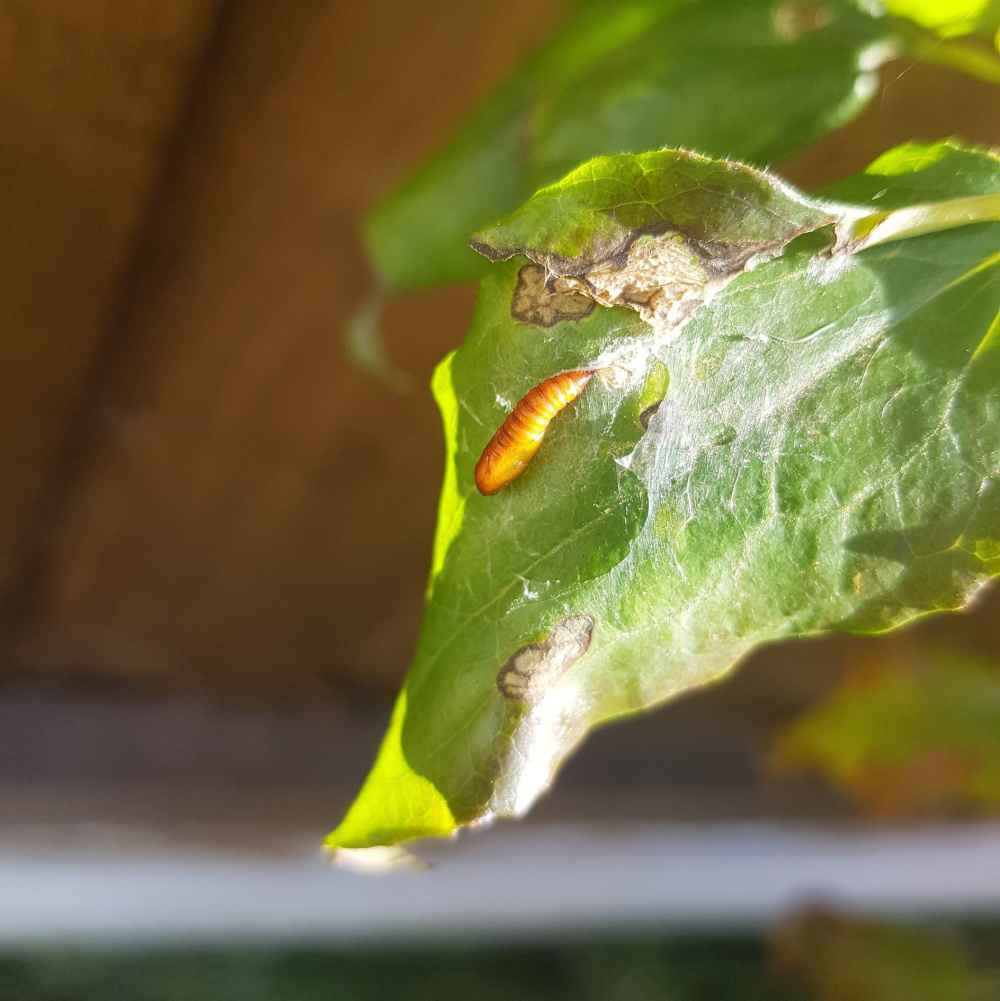This Forum will close on Wednesday 27 March, 2024. Please refer to the announcement on the Discussions page for further detail.
Larvae ID (on my clematis)
Hello, I'm an inexperienced gardener, so maybe this is very obvious for some of you. But here it goes:
One of my clematis has been suffering for some weeks now, with the leaves going brown and dry. And in the past week I've found three of these larvae, hidden between leaves that it glued together. When I squeeze the larvae, it has a bright green-yellowish liquid inside.

Do you have an idea what it is? And perhaps how to get rid of it?
Thanks in advance!
One of my clematis has been suffering for some weeks now, with the leaves going brown and dry. And in the past week I've found three of these larvae, hidden between leaves that it glued together. When I squeeze the larvae, it has a bright green-yellowish liquid inside.

Do you have an idea what it is? And perhaps how to get rid of it?
Thanks in advance!
0
Posts
Please try giving your clematis a generous drink to stop it going any crispier. They are very hungry thirsty plants and some areas have had a very dry April and May and others have had little rain over the summer. Give it 10 litres a day, poured in slowly so it soaks in, and do this every day for a week and then every 2 or 3 days till the autumn rains set in.
Once the ground is good and wet in autumn, give it a mulch of well-rotted garden manure round the base and then again next spring. This will provide nutrients to teh roots and help lock in moisture. You can also add a handful of specialist clematis feed in spring. prune as normal for its group. Keep it watered in future dry spells.
However, it's also perfectly natural for old foliage to die off, depending on the variety and time of flowering.
@wild edges might be able to ID the larvae. Clematis aren't terribly prone to a lot of serious insect problems. Biggest problem is usually from slugs and snails. There are sawflies around at this time of year, so it could be something like that.
I live in west central Scotland - not where that photo is...
However, it's also important to know which type it is so that the pruning is done at the right time etc, which also helps promote new healthy growth, and new stems. Other planting nearby will also affect water uptake. If it's in a pot, it's even more important.
I live in west central Scotland - not where that photo is...
And the Vagabonds are ok-ish but with a tendency of dry leaves. With the hero of our post really suffering. Maybe they do need way more water than I've been giving them.
So you all seem to think the dryness is not from the larvae (which is actually a chrysalis), but from good ol' lack of water. I would hope that's the case, it's so much easier to sort out
I struggle with them here - too wet.
The Vagabond is a Group2 and will certainly do less well if it's dry.
Not familiar with Fleuri.
I live in west central Scotland - not where that photo is...